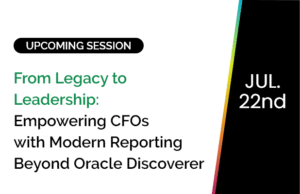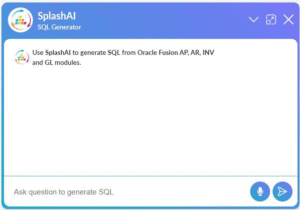What is a Business Intelligence Reporting Tool?
Critical business information is synonyms to Business Intelligence. BI is a phenomenon in technology that provides you with all the insights required to making informed and wise business decisions. It helps in managing and analyzing all the raw data to enhance business operations with data analytics.
As we are moving forward in the corporate space, for everything, self-service reporting tools are emerging to be an end-to-end solution for eliminating cumbersome IT processes. They play a vital role in transforming vast volumes of unfiltered data into visually appealing reports and dashboards in no time.
The business intelligence platform comprises of many BI reporting tools, business analytics, data visualization, data analytics, etc. All these BI tools assist in collecting and processing vast volumes of unstructured data and quickly help in finding the required information through queries. The BI reporting tools help in gaining proper analysis of the data through accurate visualizations, dashboards, reports, etc. and present a genuine picture of the Key Performance Metrics (KPIs), operational efficiencies, new income avenues, new opportunities, trends and patterns and much more.
Additionally, BI can co-exist with a wide range of data analysis tools for reporting and querying of business data. It includes enterprise reporting, ad hoc analysis, mobile BI, Online Analytical Processing (OLAP), cloud BI, SaaS BI, real-time BI, open-source BI, operational BI, and collaborative BI. Business intelligence reporting can change big data from different sources and bring it to life with simple and helpful visuals.
Data are just summaries of thousands of stories – tell a few of those stories to help make the data meaningful. Chip & Dan Heath, Authors of Made to Stick, Switch.
10 Key Points Why Business need a Business Intelligence Reporting tool
1. Understanding the best of the performing pointers of your business and comparing it with the worst-performing facets. View and analyze ranks from all the teams of the company to further prioritize on the weak points and move towards shared goals.
2. Run a pseudo test on the past data for future predictions. Analyze which decision will impair the business and which ones are going to have a potential impact. Planning better for the future of the company based on risks, issues, efficiencies, etc. from the fact-based analysis can improve risk management.
3. Gaining a real-time 3600 overview on the happenings of the company is imperative for the leaders. Executive dashboards allow them to make fast and informed decisions with the help of informative reports, summaries, graphs, charts, etc.
4. It is advantageous to have a condensed view of all the big data through interactive reports. With it, one can identify issues, anomalies, trends, outliners, regressions, patterns, etc. and be prepared for making the right decision through statistical analysis.
5. Cartographic and graphical representations help in analyzing the performance of everyone region-wise and assist companies in shifting the focus on regions that need attention. Location intelligence with BI reporting tools makes it easy for the leaders to peruse on the goals that are underachieving.
6. Managers need to have a clear and detailed summary of the operational reports, including, daily activities and events at the end of each day. With business intelligence reporting tools, one can stay informed and make wise decisions.
7. Unraveling hidden trends and analyzing information with pivot tables help companies to extract results from vast volumes of data through counting, sorting, averaging, and performing calculations. Hidden patterns give a clear understanding of the loopholes and then act on them.
8. BI is the best known for ad hoc reporting. Dumping enormous requests on your IT department is a thing of the past. Get an overview of your end-users and generate reports on your own, on the go. Ad-Hoc reporting helps you to customize your reports with the relevant queries that you’d like to emphasize and pick pointers that help you in gauging results that you need.
9. Personalization and customization are the most significant assets to your BI reporting tools, personalize your applications, and provide access to users’ as you see fit. Provide specific features and tools to a particular individual or a group of people, as per the user-specific needs.
10. Open integration of BI platform is providing data at the required time for extracting comments and reviews. Smart BI tools need to integrate with data formats and applications to seamlessly provide you with actionable reports. Smart BI ensures that all the systems are under one big system.
Conclusion
From single-dimensional information to a tremendously insightful business tool is an apparent journey. It is not enough to look for features you are aware of in your BI reporting tool. Emphasizing on the depth and exploring what is best for which specific need is the best way forward in understanding your BI reporting tool needs.
Whether you require more advanced analytics or basic reporting and dashboards, analyze your company’s requirements and look for a tool that best fits your needs. Familiarizing oneself with the features alone is not sufficient. An educated decision on how these features are going to help your company’s processes can heighten the chances of successfully implementing a BI reporting tool within your organization.
SplashBI offers dynamic KPIs using table drill-downs and charts to give you comprehensive insights. Try SplashBI’s free trial. It comes loaded with features to make the most of your raw data.
SplashBI helps you to measure, analyze, and optimize your data. For Out-of-the-box reports and dashboards, with our BI platform, request a demo.









